Podcast: Play in new window | Download
Subscribe: Apple Podcasts | Spotify | Pandora | RSS | More
Synopsis
Repurposing your blog post is one of the smartest and easiest ways to spread your message to a wider and more varied audience. The more people that see it and read it, the more that will benefit from it, and you will sell more books. With these 5 steps, you can easily and quickly take that same written post, and change it into an audio podcast.

What You Will Learn
1. You will learn the quickest and easiest way to repurpose your blog post into a podcast.
2. You will learn what equipment and software you will need to create your podcast.
3. You will learn how to reformat your blog post into a podcast script.
Introduction
Repurposing your blog post is one of the smartest and easiest ways to spread your message to a wider and more varied audience, and get your name and work in front of many more people. You worked really hard at creating a high-quality and informative blog post. It probably took you days or weeks to perfect it.
After all that work, you want as many people as possible to see it, and become more familiar with your work. The more people that see it and read it, the more that will benefit from it, and you will sell more books.
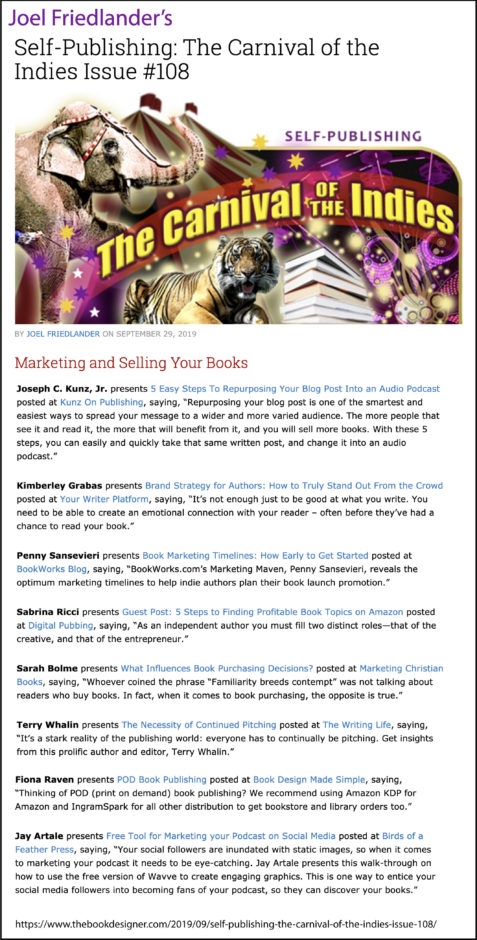
Now, with these 5 steps, you can easily and quickly take that same written post, that is sitting on your blog, and change it into another format – an audio podcast – and share it with an entirely new audience. Here they are:
Step 1. Choose Your Blog Post to Record
Not every single blog post is going to be a perfect candidate for an audio podcast. A blog post that is simply a list of items, or simply a few thoughts that you’re sharing with your readers, are probably not worthy of a podcast. You might also want to start with one of your better or more popular posts. A post that is truly representative of your blog’s main subject matter is also a great place to start.
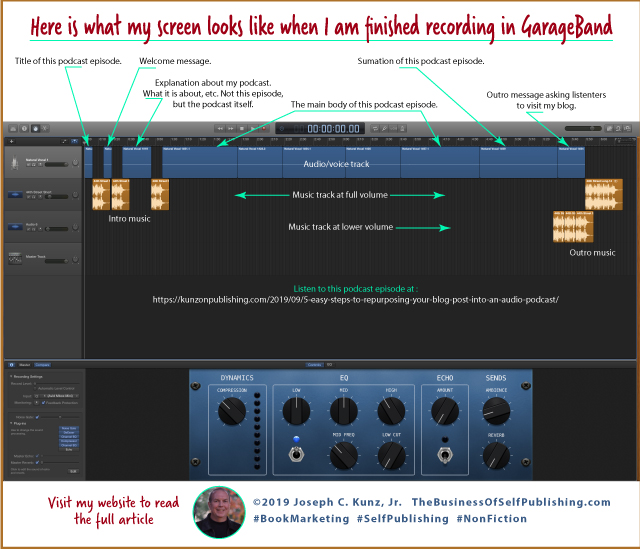
Step 2. Reformat Your Blog Post Into A Script
Since your blog posts were probably written for readers, not listeners, you will need to adjust your text to sound more natural when spoken out loud. Begin this process by simply reading your post out loud and listening to how the words flow. The trick is to make the text sound as natural and flowing as a conversational speech.
I have realized that writing my blog posts with the idea of using them as an audio podcast recording script, has forced me to write in a more natural-sounding way. This has made my posts easier for my readers to read and understand.

My podcasting equipment set up in my home office.
Step 3. Get A Microphone and Software
A. Microphone
You must purchase a good microphone. This doesn’t mean an expansive mic. But, it should be a condenser mic with a small stand to hold it steady. Also, get a foam wind-screen / pop-screen for the mic. Start your search for these on Amazon.
B. Software
The best place to start is Apple GarageBand. It’s very inexpensive, very easy to learn how to use, and comes with music that is free to use for your intro and outro. Apple sells this for Mac and Windows.
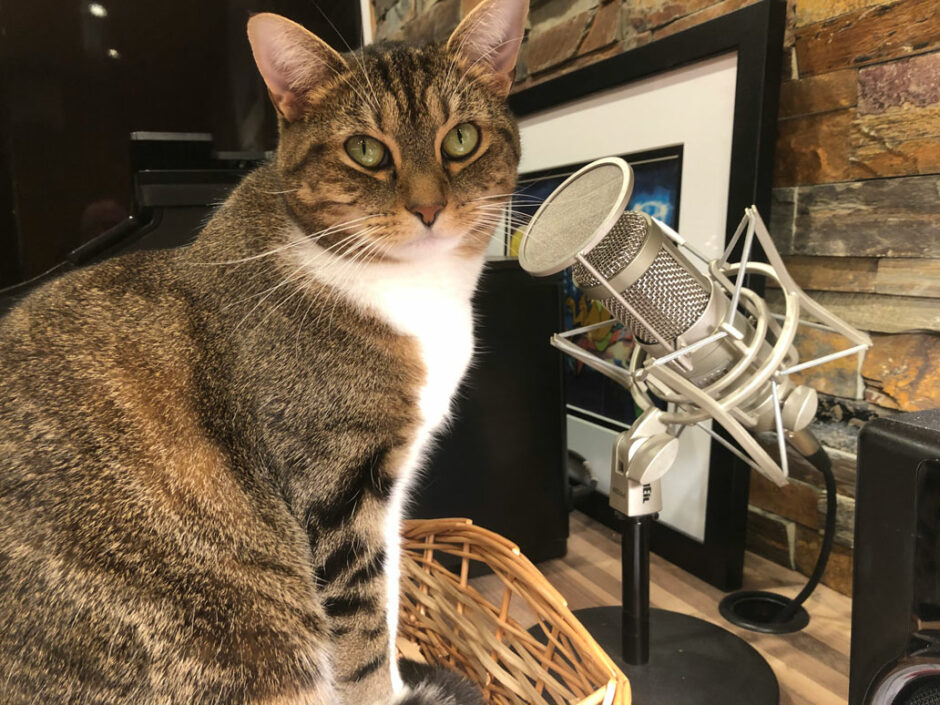
My podcasting assistant is always listening to me, and very quick to give me practical advice.
Step 4. Record Your Podcast and Add Intro and Outro
A. Record the Blog Post
a. Start your recording in a nice quiet room. Make sure everything around you is turned off. The air-conditioner, the dehumidifier, the ceiling fan, the television in the next room.
b. Speak in a relaxed, natural, and conversational fashion. The ends of your sentences should not be a rising or falling volume of your voice.
c. Make sure you pause after the commas and periods.
B. Record Intro and Outro
a. Record a quick intro to your blog post.
b. Add a little music during or after the intro.
c. Record a quick outro at the end to conclude your post.
d. Add a little music during or after the outro.
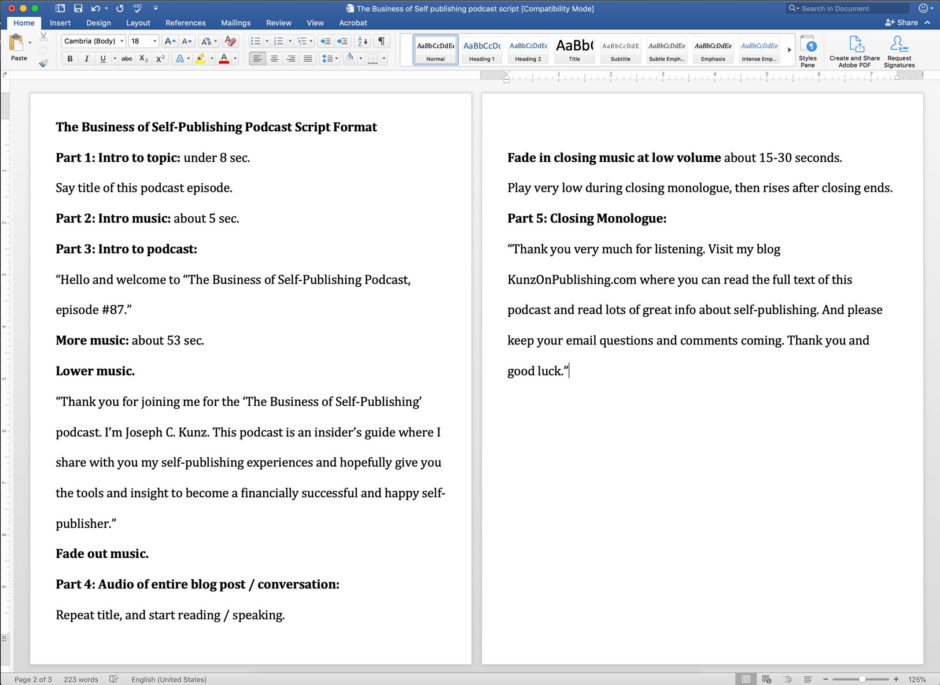
The basic outline of my podcast.
Step 5. Upload Podcast and Connect to Blog Post
a. From inside GarageBand convert your podcast to .mp3. This is the format that you can upload to your podcast host.
b. The podcast host will give you a link to that podcast.
c. Add that link to your blog post.
Done.
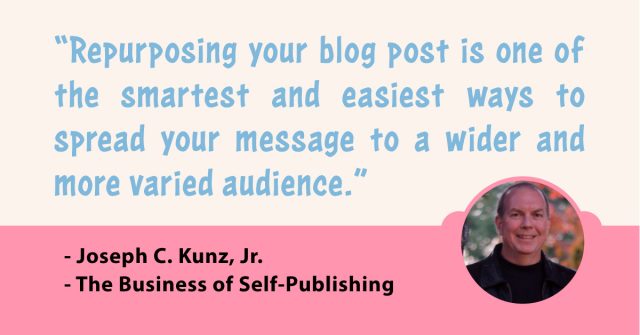
Conclusion
There you have it. A quick run-down of the exact process that I use for every podcast episode that I create. At first glance, creating a recording of your blog post and getting it onto your blog might seem daunting. But, once you get the equipment and software set up, and get some practice, it becomes an easy and fun process. And don’t forget, you can always re-record your podcast episode, and re-upload it at any time.
Questions For Us To Think About And Discuss
1. If you already have recorded some of your blog posts, how much time does it take you to record one blog post?
2. Share some of the voice techniques that you have discovered or developed that have helped you create a better recording.


